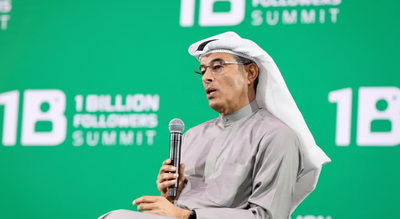ARTICLE AD BOX

Dubai billionaire Mohammed Alabbar proposes $400 billion plan to address U.S. housing shortage, create jobs, and strengthen global investment ties / Image credit: File
Dubai-based billionaire and Emaar Properties founder Mohammed Alabbar has unveiled an audacious $400 billion proposal to help solve America’s worsening housing shortage, describing it as both a humanitarian and economic opportunity that could “reshape the U.S.
market” and create up to 20 million jobs. Speaking virtually at the Reuters NEXT Gulf Summit from Georgia, Alabbar said the United States faces a deficit of nearly five million homes, warning that “if not solved quickly, this will be a disaster.” He claimed the capital needed to fill that gap could be raised “in just one week” through coordinated global investment - a bold statement that has drawn attention across global property and financial circles.
Housing supply shortage: America’s under-building problem
The United States is experiencing a significant housing‐supply shortfall. Analysts estimate a gap of about 4.7 million to nearly 5 million housing units. This shortage is the result of many years of under-construction, soaring costs, regulatory and labour constraints. The effects are broad: higher home and rent prices, fewer first-time buyers, and mobility barriers for workers. In short: a weak supply side has become a drag on affordability, economic growth and inflation control.
The proposal: A $400 billion “Fix” from Mohammed Alabbar
Mohammed Alabbar, founder of Emaar Properties, told delegates at the Reuters NEXT Gulf Summit in Abu Dhabi that the U.S. needs roughly $400 billion in capital to meaningfully address the housing shortfall. He claimed that such capital could be raised in as little as one week if the right partners are assembled. Alabbar quantified broader impacts:
- The U.S. might eliminate about 50 % of the inflation index rate, he argued. Up to 20 million jobs could be created over time.
- Over a decade the U.S. government could collect around $2.5 trillion in tax revenue.
He pointed to the roughly five-million housing‐unit shortage as the trigger: “If you look at it, [the U.S.]
suffers from a shortage of almost five million housing units and this will be a disaster if not solved quickly.” While his firm has no confirmed U.S. partnership yet, Alabbar said Emaar is exploring entry into markets like India, China and the U.S., and prefers joint ventures or stakes in local players.
What could it mean for U.S.–UAE economic relations?
If this vision progresses, it could mark a new chapter in U.S.–UAE investment ties. The United States is already one of the UAE’s largest trade partners, and Emirati funds are among the top foreign investors in U.S.
real estate including the commercial and hospitality sectors.A large-scale housing initiative could:
- Deepen bilateral investment flows, with Emirati developers participating directly in American infrastructure.
- Open doors for joint ventures between Gulf-based sovereign wealth funds and U.S. housing or construction firms.
- Strengthen diplomatic and economic visibility of UAE companies as global partners in sustainable urban development.
Should America expect a “New Burj Khalifa”?
While Alabbar’s $400 billion plan focuses on housing, his reputation for iconic architecture naturally sparks speculation: could the U.S. see a landmark project in the spirit of the Burj Khalifa?In interviews, Alabbar has often said that “a building is a symbol of confidence.” If this initiative takes shape, flagship developments might emerge — not necessarily skyscrapers, but architectural statements that combine affordability with innovation.
Think sustainable smart-township projects, mid-rise eco-districts, or digital “cities within cities.” The U.S. market, which traditionally prizes practicality over spectacle, could be an ideal canvas for Alabbar’s blend of visionary design and economic pragmatism.So, while a “new Burj Khalifa” may not rise in America’s skyline soon, the spirit of mega-scale optimism that powered Dubai’s transformation may well find a second home there.Mohammed Alabbar’s $400 billion proposal to tackle the U.S. housing shortage is striking in its scale and ambition. It blends big numbers five million-unit shortage, 20 million jobs, $2.5 trillion tax revenue with a global developer’s vision and a promise of speed (“one week to raise funds”). Whether it turns into action remains to be seen, but it spotlights housing not just as real estate, but as macro-economics, global capital flows and strategic infrastructure.

 4 hours ago
3
4 hours ago
3









 English (US) ·
English (US) ·